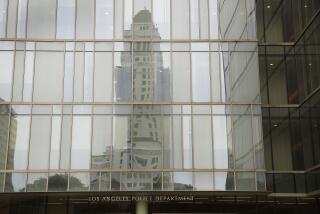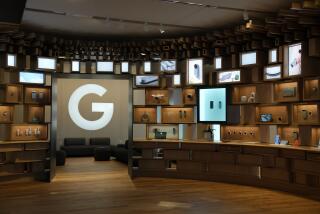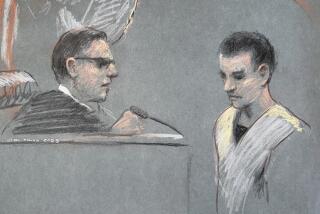Santa Clarita / Antelope Valley : Man Accused of Selling Secrets Pleads Not Guilty : Lancaster: John Douglas Charlton enters plea to attempted espionage charges in federal court.
A 62-year-old Lancaster man accused of trying to sell U.S. defense secrets pleaded not guilty in federal court Tuesday to attempted espionage charges.
John Douglas Charlton, a retired Lockheed engineer, entered his plea in Los Angeles before U.S. District Judge Harry L. Hupp, who ordered a Nov. 7 trial.
A federal grand jury indicted Charlton on Thursday for allegedly trying to sell classified information, some of which concerned the Navy’s Stealth Sea Shadow project, to an FBI agent posing as a foreign official.
FBI officials allege that Charlton tried to sell the information during a meeting in 1993 with an agent pretending to represent a Western European nation.
Charlton’s defense attorney, Donald C. Randolph, said after the short hearing that the information in question could hardly be considered classified because it had already been published in magazines such as Popular Science and Popular Mechanics. He said this point had been repeatedly made to investigators.
“We tried to convince them of that for the last year and a half, and they disputed it,” Randolph said. “So I guess we’ll have to find out in court who’s right.”
Federal officials said they hoped the case would send a message to other unemployed Southern California aerospace workers who might be tempted to cash in on secret information they still possess.
But Randolph insisted that the government picked “the wrong person and the wrong case to send that message” because the “secrets” were already public knowledge and because Charlton was motivated by a humanitarian goal, not greed. The defendant said last week that he planned to use the money to build a “lung-cleaning machine” he had invented.
Assistant U.S. Atty. George B. Newhouse Jr. insisted Tuesday that even if some details or speculation concerning a secret project had leaked out, Charlton still should not have discussed his work.
“The indictment charges that this was classified information,” Newhouse said, “which means it wasn’t within Charlton’s purview to decide that he could release it, even assuming it was somehow in the public domain.”
The prosecutor pointed out the B-2 Stealth bomber was the subject of many articles and speculative drawings before the Air Force allowed it to be photographed publicly. Before that time, employees at Northrop Grumman Corp., which builds the plane, could not legally talk about what the B-2 looked like, and even today cannot discuss aspects of the plane that remain classified, Newhouse said.
Charlton’s case will take a little longer than usual to come to trial, the prosecutor said, because hearings must be conducted on how to keep some information secret during a public trial. He said testimony may be limited on sensitive topics, and jurors may be shown only portions of secret documents.
If convicted on all charges, Charlton faces up to 105 years in prison and $2.75 million in fines.
Regarding Randolph’s charge that the government had picked a poor candidate to carry its espionage warning to other aerospace workers, Newhouse said, “We don’t choose our defendants. We take our cases as they are presented to us.”
Charlton remains free after posting a $100,000 bond. As a condition of his release, he is in the process of surrendering 54 firearms kept at his Lancaster home.
More to Read
Sign up for Essential California
The most important California stories and recommendations in your inbox every morning.
You may occasionally receive promotional content from the Los Angeles Times.










